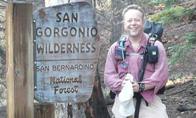How creepy do you want it?
The famously eerie tale of nine dead Russian hikers, with all the bizarre details you can handle
By Mark Morford, SF Gate Columnist
Wednesday, February 27, 2008
I admit only to this: I can get deeply creeped out, down to my very core, now and then and hopefully not all that often because, well, I still like to sleep at night.
Personally, I try to keep the creep to a minimum, not really wishing to dive down into that low, dark vibration much and hence I avoid most horror movies like the plague and I find slasher flicks and "torture porn" revolting and ridiculous and while monster flicks can occasionally be fun and thrilling, they're mostly just a cheap roller-coaster rides supplying no real nourishment of any kind. I know, that's not really the point. But still.
Ah, but the occult. The paranormal. The deeply weird, mysterious, unsolvable, disturbing. That can get to me. That has power. A good, deep creep-out, those unknowable things that get under your skin and crawl around and tug at the shirtsleeves of your fears, well, those are the things can last for years. Lifetimes. I love that. I hate that.
The final shot in "The Blair Witch Project." An oozingly possessed Linda Blair crawling down the stairs on all fours, upside down, backwards, in a full backbend, on her toes and fingertips, in the uncut version of "The Exorcist." The ending to (and overall creepy feel of) "Don't Look Now," the famous cult horror movie from the '70s with Donald Sutherland and Julie Christie and the creepy little midget in the red robe. Peter Weir's "Picnic at Hanging Rock," another classic '70s occult flick, chaste schoolgirls disappearing up a bizarrely haunted mountain — entirely fictional, but plays all too damn real.
But still, they're just movies. Fiction, mostly. No matter how good they are, they all kneel before the one true god of interminable creepiness: reality.
Here's one. It's called the Dyatlov Pass Accident. Oh my God, yes. I stumbled over this delicious tale just recently over at Metafilter and it's one of those stories that contains all the best elements of a deep, resonant creep-out. Inexplicable behavior. Bizarre factoids. Inconclusive evidence. Missing body parts. And not a single clue, almost 50 years later, as to what really happened.
The nutshell: In 1959, nine experienced Russian cross-country skiers — seven men and two women, led by a man named Igor Dyatlov — headed to the Ural Mountains, to a slope called Kholat Syakhl (Mansi language for "Mountain of the Dead," ahem) for a rugged, wintry trek. On their way up, they are apparently hit by inclement weather and veer off course and decide to set up camp and wait it out. All is calm. All is fine and good. They even take pictures of camp, the scenery, each other. The weather is not so bad. They go to sleep.
Then, something happens. In the middle of the night all nine suddenly leap out of their tents as fast as possible, ripping them open from the inside (not even enough time to untie the doors) and race out into the sub-zero temps, without coats or boots or skis, most in their underwear, some even barefoot or with a single sock or boot. It is 30 degrees below zero, Celsius. A few make it as far as a kilometer and a half down the slope. All nine, as you might expect, quickly die.
And so it begins.
Why did they rush out, unable to even grab a coat or blanket? What came at them? The three-month investigation revealed that five of the trekkers died from simple hypothermia, with no apparent trauma at all, no signs of attack, struggle, no outward injuries of any kind. However, two of the other four apparently suffered massive internal traumas to the chest, like you would if you were hit by a car. One's skull was crushed. All four of these were found far from the other five. But still, no signs of external injuries.
Not good enough? How about this: One of the women was missing her tongue.
Oh, it gets better. And weirder.
Tests of the few scraps of clothing revealed very high levels of radiation. Evidence found at the campsite indicates the trekkers might've been blinded. Eyewitnesses around the area report seeing "bright flying spheres" in the sky during the same months. And oh yes, relatives at the funeral swear the skin of their dead loved ones was tanned, tinted dark orange or brown. And their hair had all turned completely gray.
Wait, what?
The final, official explanation as to what caused such bizarre behavior from otherwise well-trained, experienced mountaineers? An "unknown compelling force." Indeed.
Here's the problem: All the convenient, logical explanations — avalanche, animal attack, secret military nuke test — fail. Russian authorities held a three-month investigation. Rescuers, experts picked through every piece of evidence. There were no signs of natural disaster. And if it was just an avalanche, why was the area closed off for three years following the event, and all related documents put in a secret Russian archive until 1990? If it was some sort of weird nuclear megablast (which I suppose may tint you orange, but won't turn your hair gray), what the hell happened to her tongue?
I love stories like this. I hate stories like this.
Sure, you want to go for the logical. Hell, who knows what hellish weaponry they were testing in the mountains in Khrushchev's Russia in the late '50s? Who knows what dark mysteries are buried in the landscape by the world's militaries as they test their dark deeds? The rule goes like this: Any weapon of horror and death man's mind can conceive, odds are gruesomely good the government or military has considered it. Or even built it.
Then again, maybe not. The "horrifying military experiments" theory, spawn of a thousand movies and conspiracy theories, has one fatal flaw: proof. What, 75 years of high-tech military advances and hundreds of billions of dollars spent and a million people working in various sinister branches of the military, and yet not one scrap of truly bizarre or outrageous military weaponry has popped up in the public sphere, been leaked or revealed or unearthed? This is the Internet/YouTube/nothing's-secret age — you'd think we'd get at least one piece of irrefutable evidence proving how the Pentagon has been testing 10-story remote-controlled radioactive spiders with lasers for eyes. Or something. Not that I trust the government, per se. They just aren't that smart.
This is both the joy and horror of stories like Dyatlov — they make your mind jump and bend and struggle. Logic fails quickly. Easy explanations don't work. Complicated ones feel incomplete. The creepiness takes hold, begins to burrow, make you squirm.
So of course, you jump further. You reach for the paranormal, metaphysical, unknowable, to things like UFOs and spirits and ghosts, dark forces and mysticism and the occult, because, well, that's where the action is. That's where we get to touch the void, dance on the edge of perception, realize how little we truly know of anything.
After all, if you really think all there is to this world is what your five senses show you, if you think there's always got to be a logical, earthbound explanation for stories like Dyatlov, well, you might as well just join a megachurch and wipe your brain and your intuition and your deep, dark curiosity clean right now.
As Dyatlov himself might say, his skin orange and hair gray and eyes wide wide wide, you think you know, but you have no idea.
Hiking ghost story
-
AlanK

- Posts: 1069
- Joined: Thu Sep 27, 2007 9:28 pm
Good campfire material from SFGate.com.
-
Hikin_Jim

- Posts: 4688
- Joined: Thu Sep 27, 2007 9:04 pm
Experienced snow travellers ripped their sleeping bags open and ran in a blind panic, naked through the snow, dying of hypothermia. Sounds perfectly logical. 
-
HikeUp

- Posts: 4036
- Joined: Thu Sep 27, 2007 9:21 pm
Yep...bad mushrooms.Experienced snow travelers ripped their sleeping bags open and ran in a blind panic, naked through the snow, dying of hypothermia. Sounds perfectly logical.
-
Hikin_Jim

- Posts: 4688
- Joined: Thu Sep 27, 2007 9:04 pm
which would explain that missing tounge, no doubt.
-
AlanK

- Posts: 1069
- Joined: Thu Sep 27, 2007 9:28 pm
The Wikipedia article on the Dyatlov Pass Accident is interesting (note that is is in the "disputed" category).
-
Hikin_Jim

- Posts: 4688
- Joined: Thu Sep 27, 2007 9:04 pm
One item of interest to note: despite the orange skin, gray hair, apparent blindness, and the military's refusal to transport the bodies, the film in the party's cameras was still good if I'm reading the links and story correctly. The victims' own photos were used as a part of the investigation.
"Curiouser and curiouser," said Alice.
Where's Rod Serling when you really need him?
"Curiouser and curiouser," said Alice.
Where's Rod Serling when you really need him?
-
yoskolo

- Posts: 56
- Joined: Wed Dec 31, 2008 10:34 am
I know this is probably a long dead thread, but maybe this will interest someone. Given the year (1959), the film in their cameras was probably a very slow ASA reversal film. Most likely something similar to Kodachrome with a speed of 12 or 16 was loaded. A very slow and stable film like that would be very unlikely to show any evidence of radiation. I personally have passed rolls of a less stable and faster slide film through shady overcranked third-world airport x-ray machines with no ill effect.
So there's that.
So there's that.
-
EnFuego

- Posts: 677
- Joined: Mon Dec 15, 2008 11:14 am
NERD!!!!!yoskolo wrote:I know this is probably a long dead thread, but maybe this will interest someone. Given the year (1959), the film in their cameras was probably a very slow ASA reversal film. Most likely something similar to Kodachrome with a speed of 12 or 16 was loaded. A very slow and stable film like that would be very unlikely to show any evidence of radiation. I personally have passed rolls of a less stable and faster slide film through shady overcranked third-world airport x-ray machines with no ill effect.
So there's that.

